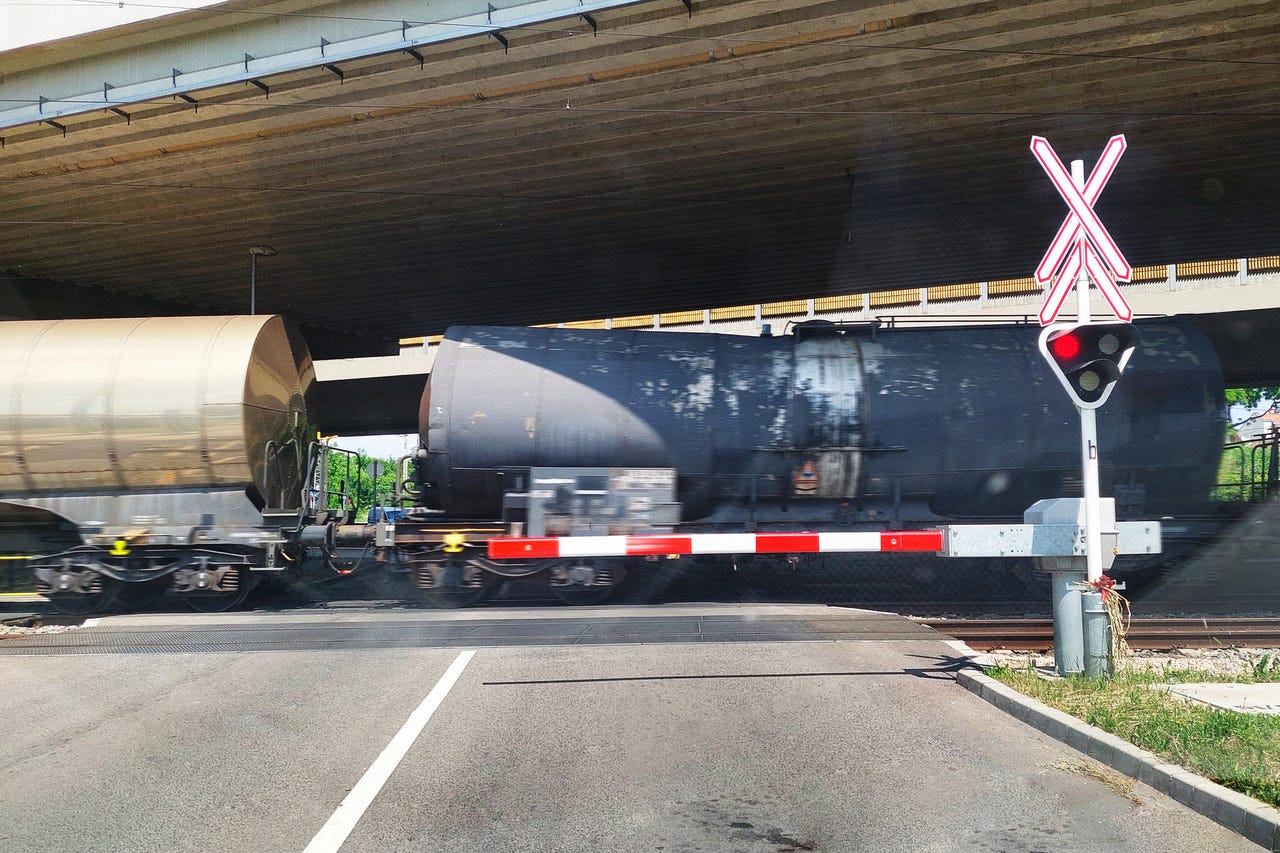Aftermath
“Your own safety is at stake when your neighbor's wall is ablaze.” – Horace
A “railway town” is a settlement that can trace its foundational growth to the development of a railway station or junction nearby. In the US, the great rail boom of the 19th century rewrote the country’s map, with towns and cities small and big created where little existed before. Hundreds of towns still feature tracks that pass right through the heart of Main Street, and mega-cities like Chicago, Atlanta, and Los Angeles all owe their prominence to the explosive growth in rail. Famously, rail propelled the population of Chicago to grow by a factor of 70 in only 30 years.
Although the rail boom preceded the advent of modern industrial chemistry by several decades, its cartographic legacy has forever tied these two industries to the same vexing problem: the nature of rail cargo has become far more dangerous than when the tracks were first laid down, but neither tracks nor towns are easy to relocate. According to the Association of American Railroads (AAR), US railroads “typically transport more than two million carloads of hazardous materials each year.” Such cargo invariably passes near population centers with a regularity that would surprise many.
The US chemical sector is huge, and its central role in our economy is simply not negotiable. According to the American Chemistry Council (ACC), the industry accounted for more than a half-trillion dollars of revenue in 2022, and nearly 25% of the US GDP is “supported by the business of chemistry.” The country’s current standard of living is derived in large part from how efficiently chemical companies convert high-energy feedstocks into useful materials, and everything from the food we eat to the phones that dominate our lives would not otherwise exist without them. (We covered many of these fundamentals in a piece we wrote in October of 2021 called “Where Stuff Comes From.”)
Today, the chemical industry all but accuses the big four Class I freight rail companies – Burlington Northern Santa Fe (BNSF), Union Pacific (UP), CSX Transportation (CSX), and Norfolk Southern (NS) – of operating as a de facto oligopoly, routinely using their excessive market power to extract disproportionate profits despite offering deteriorating service, risking public safety in the process. Years of behind-the-scenes friction between the two camps escalated in December during a hearing before the Surface Transportation Board (STB), the federal agency tasked with regulating the rail companies. The hearing was called to investigate UP’s rapidly increasing use of embargoes, a designation defined as “controlling traffic movements when, in the judgment of the serving railroad, accumulations, threatened congestion or other interference with operation warrant temporary restrictions against such movements.” In essence, embargoes are analogous to force majeures. In 2017, UP issued only five embargoes, whereas they had already imposed more than 1,000 in 2022 by the date of the hearing. Here is a key passage from the ACC’s prepared testimony before the STB (emphasis added throughout):
“Embargoes may be reasonable in some circumstances, particularly in response to weather emergencies or other external factors. However, ACC is concerned that UP and potentially other railroads will increasingly turn to embargoes to manage long-term congestion problems. It is particularly troubling that some of these underlying conditions were created or exasperated by the railroad’s own management decisions, including actions to cut jobs, mothball equipment, and delay infrastructure investments. The STB must not allow such embargoes to become normal and accepted practice.”
For its part, the freight rail companies are forced by the federal government to transport dangerous materials regardless of the peril such cargoes represent. In particular, they lament the substantial risk embodied by having to carry Toxic Inhalation Hazard (TIH) chemicals on their lines. Included on the TIH list are ammonia and chlorine, both of which are transported by rail in significant quantities. Here is how UP characterizes the situation from their perspective:
“Under the common carrier obligation, the federal government requires railroads to transport hazmat, whether they want to or not. Trucks and barges do not have this same obligation and may refuse to carry hazmat at their discretion. Union Pacific does not make Toxic Inhalation Hazard materials, own the tank cars that move TIH or decide the origin or destination to which it is shipped. However, the common carrier obligation requires Union Pacific to transport TIH.”
The environmental damage resulting from the recent derailment of a Norfolk Southern train in East Palestine, Ohio is sure to bring this complicated scuffle to the forefront. As politicians seek both accountability for the accident and assurance that incidents like this can be avoided in the future, difficult questions will undoubtedly be asked about how our railway system is operated and why the chemical industry burdens it with so many hazardous materials in the first place. What are the underlying sources of blame for this most recent derailment disaster, what can we expect in the weeks and months ahead, and what is the unexpected implication for one source of alternative energy? Let’s take a look.




